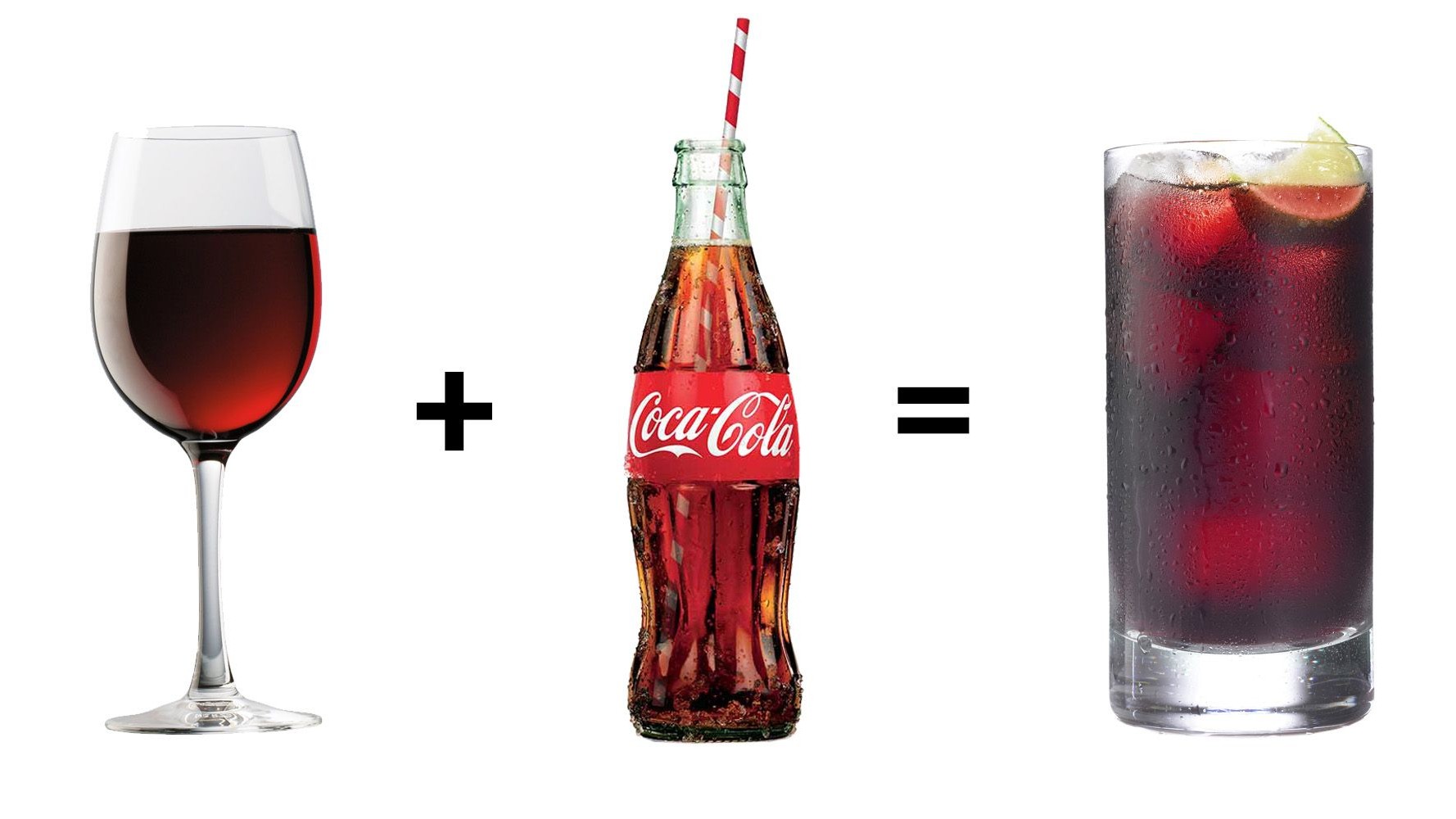Let Me Explain Why Red Wine and Coke Is Actually an Amazing Combination
Meet the kalimotxo, the abominable snowman of cocktails. (Because you've heard about it before but never seen it IRL and kinda didn't believe it existed. Get it?)


Upon returning from a trip to Spain, a friend of mine screamed at a college tailgate "KALIMOTXO!" before presenting us with red wine that she then, to our horror, mixed with Coca-Cola. It was...interesting.
Once, after hearing a fellow editor at a press dinner years ago rant about how young people in China were mixing very expensive red wine and Coke, I mentioned to her that it seemed like a wealthy take on the popular Spanish (and Latin American, and Eastern European...you get the gist) cocktail. She looked like she was about to pass out.
To stop you from being *that* person, here's a basic guide to kalimotxo—and why you should try it.
What It Is
Simply stated, it's red wine and coke. It's generally served over ice in short glass tumblers. Sometimes, it's served with lime. The mix is supposed to be 50% Coke and 50% wine, but like with everything, sometimes you get a bartender who 1) doesn't know how to make the proper drink or 2) feel like they're doing you a favor by giving you more booze. Depending on what country you're in, there might also be other additions—like blackberry liqueur–or substitutions, like orange soda instead of cola.
Where It Came From
The drink originated in Spain, though other countries (including a big part of Eastern and Central Europe) drink the same cocktail. The name can be traced back to the 1970s, when the popular name "rioja libre" was overtaken by "kalimotxo," a combination of two nicknames. In some parts of Spain, it's commonly spelled as "calimocho" (basically, to help with pronunciation confusion).
What It Tastes Like
The original idea of mixing the two beverages was, essentially, to mask bad red wine. So really, you're tasting a lot of coke with a little bit of a wine aftertaste. In fact, that's generally the origin story of the drink—that in 1972, as part of the Puerto Viejo festivities, servers noticed the wine they were serving wasn't good, so they tried to cover up the sour taste with something they had on hand—cola. And kalimotxo was born.
If you need more info/incentive, you can watch these people drink it for the first time. (Skip to 1:41.)
Get exclusive access to fashion and beauty trends, hot-off-the-press celebrity news, and more.
Now go forth and spread the kalimotxo gospel. (If anything, it makes for popular bar banter.)
Follow Marie Claire on Instagram for the latest celeb news, pretty pics, funny stuff, and an insider POV.

Samantha Leal is the Deputy Editor at Well+Good, where she spends most of her day thinking of new ideas across platforms, bringing on new writers, overseeing the day-to-day of the website, and working with the awesome team to produce the best stories and packages. Before W+G, she was the Senior Web Editor for Marie Claire and the Deputy Editor for Latina.com, with bylines all over the internet. Graduating from the Medill School of Journalism at Northwestern University with a minor in African history, she’s written everything from travel guides to political op-eds to wine explainers (currently enrolled in the WSET program) to celebrity profiles. Find her online pretty much everywhere @samanthajoleal.
